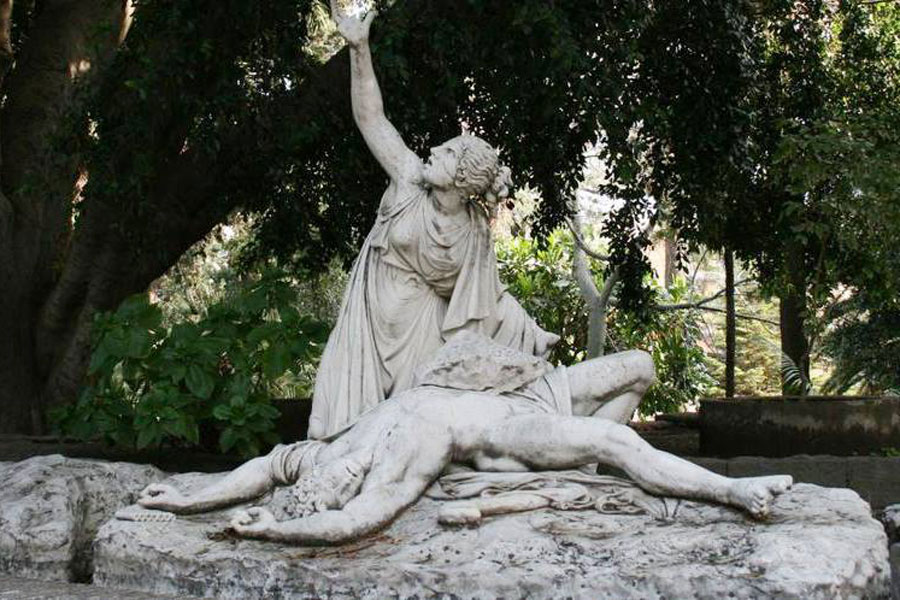The cathedral by the sea set of the murders in ΄Montalbano΄
Observing it from afar, while you get lost between half-deserted roads and a deep blue sky, you could really mistake it for a ruined cathedral that stands out over the sea, with a chimney instead of the bell tower and the facade so dear to the fans of the inspector Montalbano. For the inhabitants of Sampieri, near Scicli, it is not the Mànnara, set of murders and mysteries, but the Furnace Penna, a brick factory dating back to the early twentieth century, which is a long time destination of tourists and fans and also at the centre of a heated debate on its renovation, between political promises, regional funds and works that have not yet begun.
It was built between 1909 and 1912, when it came into operation. With its 86 metres, articulated on three floors and a chimney 41 meters high, this Hoffman-type factory was really at the forefront for those times: sixteen stone rooms arranged as a ring where the fire was powered by solid fuels such as pomace and almond shells. A small factory with a significant economic value that, in addition to requiring two skilled workers from the Northern Italy, gave work to a hundred young people and produced 10,000 pieces a day, sold across the Mediterranean: from here came out the bricks and tiles destined to build much of the Italian part of Tripoli, child of the nation’s colonial adventure in Libya.

The construction of the furnace, acclaimed by the need for reconstruction following the earthquake occurred in Messina in 1908, is due to Baron Guglielmo Penna who, together with other members of the noble family and the engineer Ignazio Emmolo, chose for it a strategic zone, close to the sea, the railway station and the clay quarry. And it was Emmolo who insisted that the appearance of the building had to be pleasing as well as functional. After graduating first in Catania and then in Naples, he combined the knowledge acquired in Germany with the construction technique of the territory that used the limestone, local stone, giving rise to the first example of industrial architecture applied to Hoffmann furnaces.
Today, not much remains of his majestic work: the furnace was destroyed in 1924 by a terrible fire of probable arson and never rebuilt. Since then, the evergreen charm of its ruins arouses strong emotions in those who observe it, animating the most disparate restoration projects. Furnace Penna is a unique case of industrial archaeology, surprisingly in harmony with the late-baroque monuments of the nearby Scicli. Nestled between the blue of the sky, the green of the Mediterranean scrub and the blue sea, a surreal silence surrounds it, pleasantly interrupted only by the breeze of a sandy wind. This mixture of elements, shapes, scents and colours makes it a hidden symbol of our Island, where architecture meets history, and at the same time sea, sky and earth. Here the Sun kisses even the ruins.
Translated by Daniela Marsala




David Wenman
4 years agoThank you very much for this informative article. We visited this cathedral by the sea yesterday (19 December). The day was very warm and sunny and we walked for about five hours along the coast. One of the best days ever.
Comments are closed.